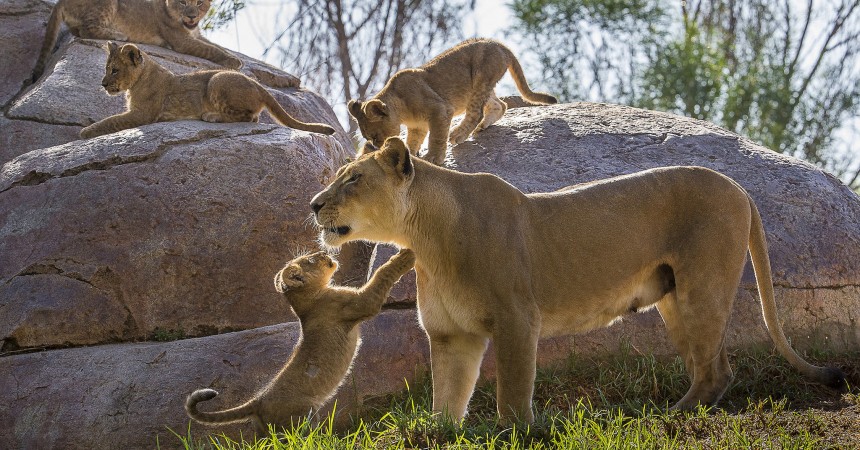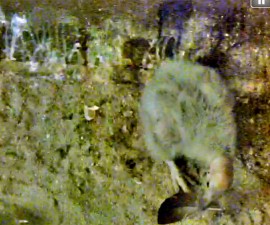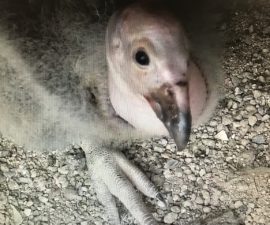When it comes to caring for our animals, one of the most frequently asked questions I hear from guests is: “How do you get them to (insert behavior here)?” Whether it’s shifting an animal on or off exhibit, training it for voluntary blood draws, or being able to make a tiger appear out of the bushes just by calling its name, a keeper’s interaction with animals can seem like magic. Actually, it’s the result of practice, patience, and professional protocols.
A large part of a keeper’s job involves training what are called husbandry behaviors, things like presenting a tail and holding still so we can take a blood draw, opening the mouth so we can visually check teeth, putting a paw up and allowing us to check claws, etc. Our training program is designed to have the animal participate in its own care. Through the use of operant conditioning through positive reinforcement and a trust-based relationship, keepers can train cats to perform a variety of behaviors that allow us to provide the best care possible.
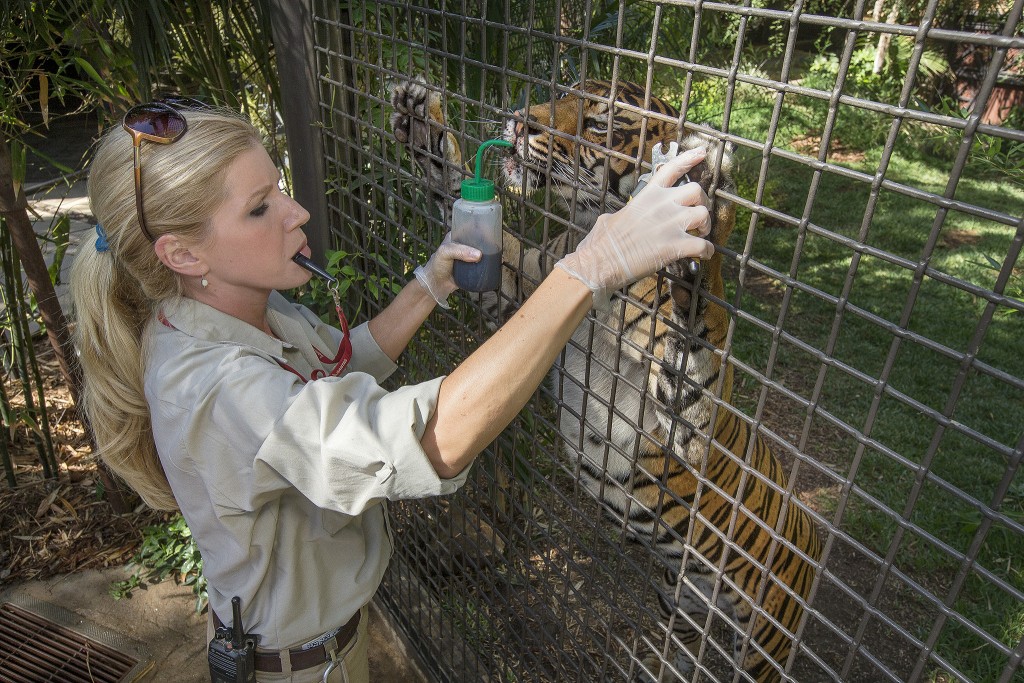
Keepers use positive reinforcement techniques to reward the animals during a training or husbandry session. This Sumatran tiger’s reward is a slurp of a ‘blood cocktail.”
For Transvaal lions and Sumatran tigers (and most other animals at the Park), care is provided through protected contact; there is always a safe barrier between keeper and animal. We train our cats to present various body parts for a daily visual inspection and to step onto a scale for a monthly weight. Sometimes the work of training involves getting an animal used to an object, called desensitizing. For example, we’ve been working with our 4 lion cubs to enter a crate voluntarily. If you’ve ever seen a house cat respond to something new, you can imagine how our 15-month old lions reacted the first time they saw the specially designed transport unit. Cats are known for their curiosity and cautiousness, no matter what the size or species!
The first step involved giving the lions access to the crate, open on both ends, without the presence of food or even a formal training session. By “habituating” the cats to the crate, we turned an unfamiliar object into a neutral experience—nothing positive or negative occurred in relation to the object. In other words, “no big deal.” Next, we began creating a positive association with the crate by placing a meal inside it on random days; food sets the mood.The presence of a keeper’s familiar face and a bucket of food are typically enough for a lion to choose to choose to go into a crate.
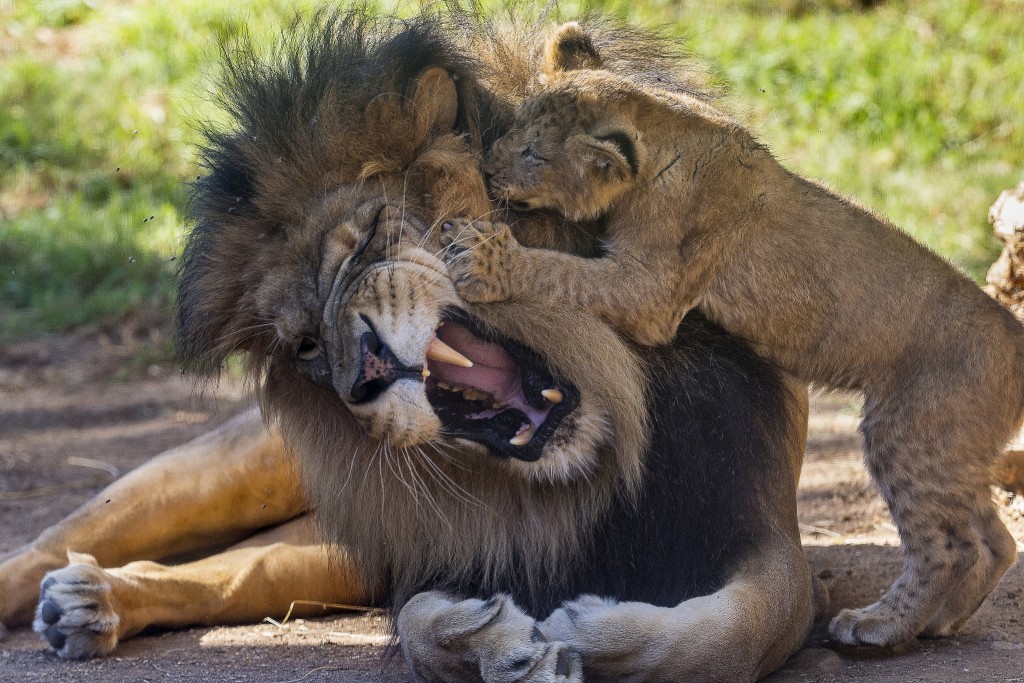
The cubs’ first lessons came from their mother and father. They developed a similar trusting relationship with their keepers.
After a few sessions of simply asking each cat to come into the crate and take food (reward!) from a keeper, we progressed to moving the back door that is used to shut the lion into the crate. But it’s not as easy as just putting the back door onto the crate! The cat has to be desensitized to the noise and movement that it creates. Again, a familiar face and a favorite food item are paired with this experience to create a positive connection.
Once the lion voluntarily enters the crate and lets the keeper shut the back door, we consider the behavior established. Since each individual animal reaches the goal a different rate, it is the keeper’s job to use their knowledge of a cat’s personality and background to know when to move on to the next step in a training session. Sometimes, we have to take a few steps back in order to make some progress or modify our initial training plan to make it work for each individual cat.
Every behavior that is trained requires planning, record keeping, consistency, and strong communication between keepers. When an animal voluntarily enters a crate, it can reduce stress on an that animal, save time and resources, and minimize the use of anesthesia. Training is one of the ways keepers communicate with the animals we care for, and it is one of my favorite aspects of being a keeper.
Lacey Byrnes is a keeper at the San Diego Zoo Safari Park. Read her previous blog, Mane-ly Lions.

